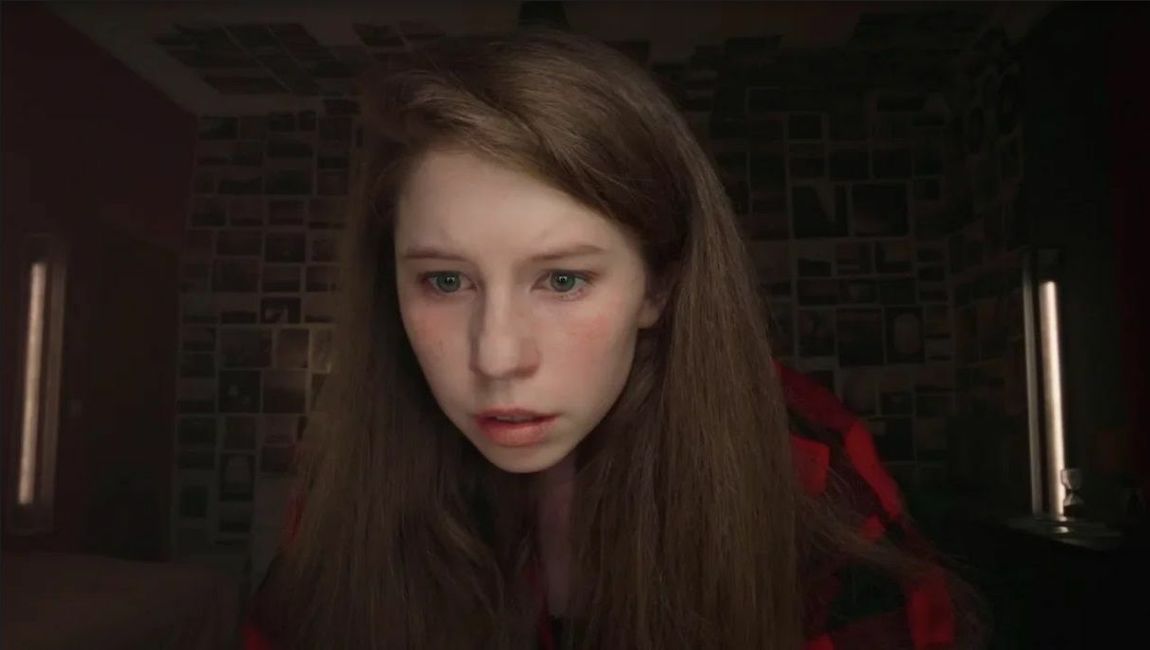Can the blatant artificiality of cinema fill the gaping void of reality? Acclaimed Tunisian filmmaker Kaouther Ben Hania’s resilient but consistently hurting Four Daughters asks this not exactly original, but ever compelling, question throughout. The answer — never clear — always poses a similarly unresolvable question. Then another. And another. Four Daughters is unlike, say, the Iranian docufiction cinema of Jafar Panahi; it doesn’t reveal the truth by blurring reality and fiction. Instead, Ben Hania’s film, with its noticeable tension between the real and the filmic, pieces together memories and emphasizes (rather than minimizes) the effort it takes to reconstruct them. The film’s unnatural amalgamation of cinema verité-style re-enactments and conventionally staged talking-head interviews provides a fragmented, fractured, and almost incomplete picture of our subjects’ lives. It’s like stitching up an open wound that, even after the patchwork, doesn’t appear to have healed.
The feeling of incompleteness is crucial to the film’s subjects: Olfa Hamrouni and her four daughters. The family of five — mother at the center, two of her four daughters placed on either side of her in the foreground, and the other two, similarly, in the background — appear as a perfectly symmetrical unit. But as Ben Hania’s narration informs us, this appearance of unity and completeness is only half true. Olfa’s youngest daughters, Eya and Tayssir, are genuinely there, “playing” themselves. Her two eldest daughters in the background, however, are portrayed by professional actors (Nour Karoui and Ichraq Mafar) filling in for Ghofrane and Rahma, who, in Ben Hania’s words, have been “devoured by the wolves [of ISIS].” The entire film plays out with this tension intact: the presence of the two actresses, acknowledged by Olfa as representative of her daughters but not quite replacements, constantly undermines the “reality” of Eya and Tayssir playing themselves in the film’s re-enactments.
Even more fascinating is how the film applies a similar dynamic between the two Olfas. The conservative and rebellious, strict and loving, masculine and feminine center of the film is doubly present: she, like her youngest daughters, plays herself and, like her eldest daughters, is played by another (in this case, star) actress, Hend Sabri. Olfa doesn’t need a Sabri to fill in for her. And yet, Ben Hania selects a high profile actress who, from her first interaction with Olfa, expresses her desire — even need — to “protect herself from becoming Olfa.” She’s at least half an extra presence, then, inhabiting the space as much as herself as she is as Olfa.
While it’s easy to imagine a version of this film in which the consistent back-and-forth between reality and performance may become so overwhelming that it becomes hard to separate one from the other, Four Daughters is most remarkable for its ability to maintain a clear distinction between the two. But it’s not just a form of Brechtian intellectualism; the emotionality, so crucial to a film like this, is present throughout. Ben Hania and her co-editors, Jean-Christophe Hym and Qutaiba Barhamji, constantly juxtapose not only big moments — such as the extensive filmic preparations with documentary confessions — to heartening and heartbreaking effect. They also do so, very often, on a shot-by-shot basis. Take, for instance, the shot-taking when Hania recreates the moment when Wissem, the only man Olfa has ever loved, says “I love you” to her. It goes from an extreme close-up of Olfa blushing to a long shot that frames the couple hugging each other through two sets of (window) frames. Or, when, during a re-enactment of Eya’s threat to Wissem for abusing them while also staying with their mother, the sequence jumps from a tight close-up of Eya’s face to a wide, low-angled shot that shows audio-video recording equipment present within the scene’s diegesis. These shifts to a meta, frame-within-frame composition undercut the “realism” of the shots that preceded it; the formal tension is there, even if it may not seem like it.
This consistent collision between opposing elements helps expand the film’s focus beyond victimization. The biggest one of these, mediated via the presence of the extra ultra-progressive Olfa, is the generational clash between mother and daughters. Sabri’s persistent need to understand Olfa reveals more about her violence toward all four of her daughters and her strict (often retrograde) regulations that may have pushed them away from one prison to another intellectual and literal one. But rather than scolding Olfa for it, Ben Hania and the other actors around her suggest that her oppressions are not her girls’. Like everything else in the film, it’s a probing question asked and answered generously, and perhaps it only leads to another question. But Four Daughters, in its own half-performative, half-real way, manages to bring forth and resolve something, if not between Olfa and her two eldest daughters, then at least between her and her two youngest daughters. It’s half-resolution, half-irresolution: a triumph of its productively and consistently contradicting sensibilities.
DIRECTOR: Kaouther Ben Hania; CAST: Hend Sabry; DISTRIBUTOR: Kino Lorber; IN THEATERS: October 27; RUNTIME: 1 hr. 47 min.







